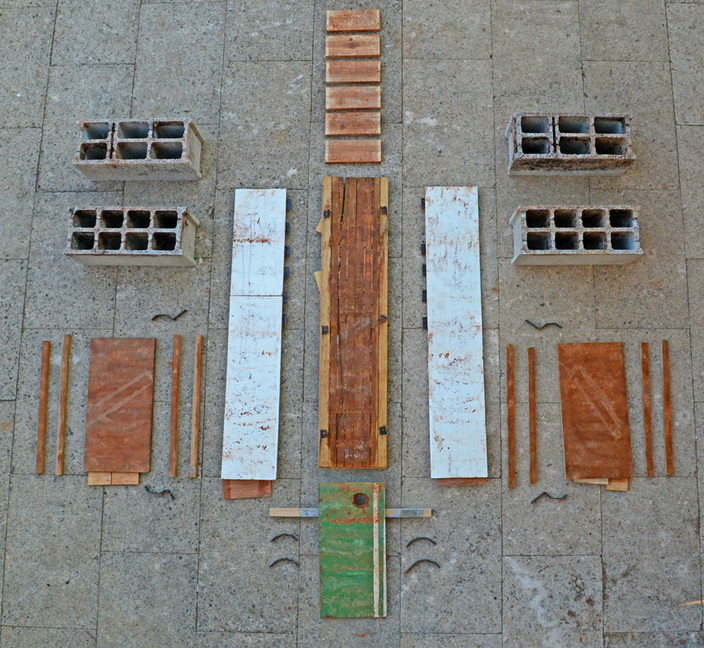NAVIGATOR
Documentary Film : http://vimeo.com/101248597
The Navigator was a logical evolution from the original rammed earth block we had made in US (see section on dirt). The idea was to develop a structure that was a little more complex in form and place it in an environment in which it would be exposed to the local climate as well as the wilderness. The site we found was a small rock excavation in the middle of the countryside that seem to have served as a mineral study for a potentially bigger exploitation in the area. We were first struck by its geometric aspect, contrasting with the dominantly organic composition of such a remote and natural location. The stone had been cut out in different levels forming steps which ended up looking oddly like an amphitheater facing the valley of pines and oak trees. Most of the debris had simply been pushed down the hill and big boulders served as testimonies of the mass displacement. The place seemed to be calling for some sort of attention or intervention. For us it was an ideal context in which to develop an artwork: scorched land, displacement of mass and strong visual identity.
The structure had to speak of the location, exhibit some of its characteristics and change along with the seasons and weather conditions. It was a way for us to make an artwork that was in harmony with its site in a non-static relationship. Therefore the rammed earth process seem to fit the parameters we had set for this project as well as offer a color contrast with the grey rocks. Erosion and collapse were to be an integral part of the work; making for an art piece that would have an evolution of form as well as dissolution back into nature.
Once we had assembled the casing in which we would pack the soil, we realized that the wooden structure was like a shell in which the artwork would be birthed. On the other hand it seemed like we had put all our creativity in the fabrication of the casing, which looked like a sculpture of its own. In that sense, the packing of the dirt was only a primitive process to testify of the artwork’s presence: a trace or an imprint. Therefore we decided to document both as thoroughly.
It is always mesmerizing to witness the opening of the structural casing and to understand that such a simple process can hold dirt together in a free standing form. The rapport of mass and scale between the rammed earth and ones own body is hard to grasp. Especially as the structure begins to erode and evolve, it appears so frail and easy to impact yet it can last for months, even years. Actually it is this accessibility and ease of transformation that makes the expressive strength of this process. Rain, wind, sun are basic elements to which the structure is receptive and it begins to show those elements through its texture and gradual decay. Animal and human marks are equally interesting contributions to the existence of the work. Finally it is the vegetation that prolongs the life of the artwork and keeps it’s memory once the structure is totally dissolved.



